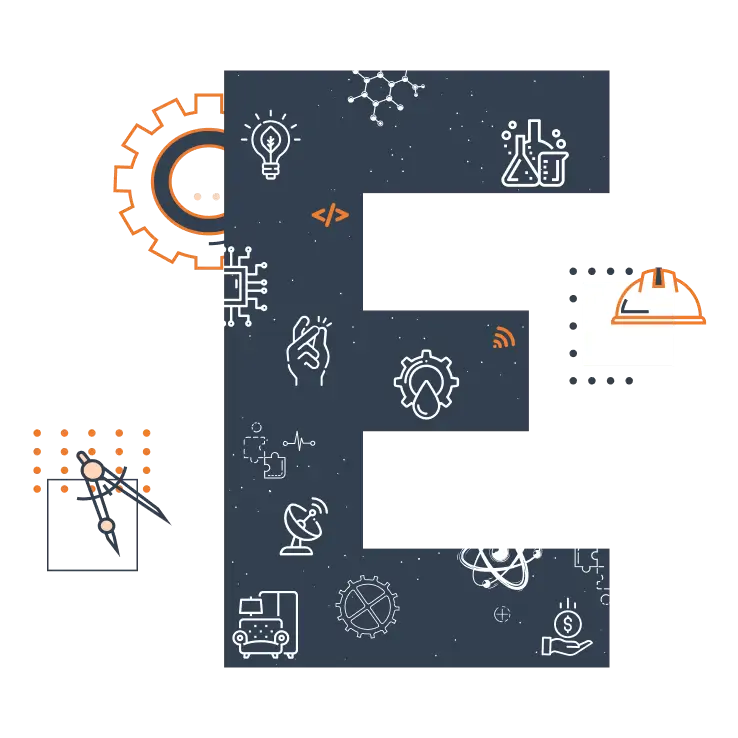Casting

Language
English
169 Views
2 Enrollments
Share
Access anytime
450 Min
This course format through pre-recorded video. You can buy and watch it to learn at any time.
FREE
videos

FREE
Why do you enroll
Key topics covered
Course details
Course tags
Course content
Why do you enroll
Unlock the secrets of casting and transform your manufacturing skills! Our comprehensive casting course covers the fundamentals of sand casting, investment casting, die casting, and more. Learn from industry experts and master the techniques to produce high-quality castings with precision and accuracy. Ideal for foundry professionals, engineers, and manufacturers, this course will enhance your knowledge, improve productivity, and boost your career prospects.
Enroll now and:
- Master casting processes and techniques
- Improve product quality and reduce defects
- Increase efficiency and productivity
- Stay competitive in the industry
Show more
Key topics covered
- Introduction of Casting
- Casting Terminology
- Pattern Allowances
- Sand Moulding
- Gating system
- Shell Mould Casting
Course Details
Casting is a manufacturing process that involves pouring molten metal into a mold to create a desired shape or design. This ancient technique has been refined over centuries and is widely used in various industries, including aerospace, automotive, medical, and industrial applications. The casting process begins with creating a pattern or replica of the desired shape, followed by preparing the mold cavity. The molten metal is then poured into the mold, allowed to solidify, and removed once cooled. The resulting product, called a casting, can be made from a range of materials, including ferrous and non-ferrous metals, superalloys, and composites.
The versatility of casting lies in its ability to produce complex geometries and intricate designs, making it an ideal method for creating components such as engine blocks, cylinder heads, gearboxes, and turbine blades. Additionally, casting enables high-volume production through techniques like die casting and continuous casting. However, casting also presents challenges, including material limitations, defects, dimensional accuracy, and surface finish. To overcome these issues, foundries employ various techniques, such as gravity casting, pressure casting, vacuum casting, and squeeze casting.
The benefits of casting are numerous, including cost-effectiveness, reduced machining and assembly costs, and the ability to produce complex shapes. Casting also allows for material versatility, enabling the use of various metals and alloys. With advancements in technology and simulation software, casting has become increasingly precise, enabling the production of high-quality components with improved mechanical properties. As a result, casting remains a vital manufacturing process, driving innovation and productivity across diverse industries.

Show more
Course tags
Industry domains :
Engineering Disciplines :
Course content
1
Steps of Casting Processes :
2
Casting: Terminology :
3
The Pattern Allowances I :
Show more
FAQs on Casting
Having specific question ? Ask now
Trainer’s Feedback
4 course rating
39 ratings
AF
A Fabio Riyan
2 months ago
Very useful to budding engineers
VN
VIKAS_D_ NAYAK
3 months ago
usefull
UM
URK20AE1047 MOSES
3 months ago
very useful for beginners
PS
Prathamesh Shevale
3 months ago
Excellent course.
MM
Mostafa Mohamed Elsayed
3 months ago
Good
SS
SANJAY S 22CHR058
4 months ago
Good
FK
Farhan Khan
4 months ago
Good course
MS
Marthin Siagian
4 months ago
Good Course
AA
Ayan Adhikary
4 months ago
Great 👍
AH
ABDUL HASIB HASAN ZAYED
5 months ago
Very good.
TE
Team EveryEng
5 months ago
Good
PE
Process Engineering World
5 months ago
Good
PP
Prasenjit Pandit
5 months ago
Well narrated !!
TH
Tc.Mohd Hairul Jamaludin
6 months ago
Good
TH
Tc.Mohd Hairul Jamaludin
6 months ago
Good knowledge
AJ
Anuj Jagadale
6 months ago
well prepared content.
AJ
Anuj Jagadale
6 months ago
Highly appreciable content made.
TE
Team EveryEng
6 months ago
Good course
MR
Mohammed Rizvi Uvais
7 months ago
Well prepared presentation
MA
Mario Alberto Aguilar Herrera
7 months ago
Simple but excellent explaining
SC
SARTHAK CHAVAN
10 months ago
The lecture was quite good and interesting
HN
Harishankar Nagapuri
10 months ago
Excellent
SN
Shripad Nilakhe
10 months ago
Nice
NG
Nishanth G
10 months ago
Good Seminar
D2
DAVE 2D
10 months ago
Good session and explain as i expected
SK
Srinivasulu Killa
10 months ago
Good
bm
bhavin mehta
a year ago
Excellent course.
SA
Syed Aamir
a year ago
Good
SG
Sampath G
4 months ago
nicely explained
MY
MUHAMMAD YOUSUF KHAN
6 months ago
good good
PK
Prasanna Koduru
7 months ago
Good
SG
Sampath G
4 months ago
Should have discussed ddetails like 1.why density based solver. 2.why pressure boundary conditions. 3.How pressure values affect the working of nozzle etc
MF
Mustahid Fahim
3 months ago
Lectures are good but it's already available in the YouTube nptel lectures why should I watch here
KM
Khushal Mahajan
3 months ago
Why uploading NPTEL videos on your site ?
NA
Noor Alam
6 months ago
Good
YD
Yogesh Desai
a month ago
Useless
JK
Jahanzeb Khan
5 months ago
where are the other video
rk
recheal komugisa
7 months ago
Request for the video
TK
TANMAY KULAYE
10 months ago
Only one video is uploaded, rest of the videos are not there. 👎👎👎 Please upload other videos of Green Hydrogen.
Certificate of Mastery

Receive well recognised certificate that you can showcase on
Featured courses
Hazard Identification and Risk Assessmen...

How to prevent corrosion in the oil and ...

Application and use of "Green Hydrogen"

Career in EPC projects for Freshers

Career in EPC Cost Estimation

Learn MATLAB Programming

More Technical Courses From Team EveryEng
Pressure Vessel Essentials: Need of code...

How to prevent corrosion in the oil and ...

Application and use of "Green Hydrogen"

Gas Turbines with special emphasis on hy...

Career in EPC projects for Freshers

Career in EPC Cost Estimation

Bolt Torque Calculations using Dennis Mo...

Introduction to SAP and its role in the ...

More Articles From Team EveryEng
Davisson and Germer Experiment

Compton Scattering Effect

Coherent Source

Black Body Radiation

The engineering services is changing and...

What is first, YOU or YOUR COUNTRY?

Visionary Leaders make the nation great

Engineers need business acumen to be suc...

Collaboration is the first step of intel...

More Communities From Team EveryEng
Similar Content Learn:
Different element types commonly used in...

CMS IntelliCAD Advanced 2D

CMS IntelliCAD Intermediate 2D

CMS IntelliCAD Basic 2D

Hydraulic System Basic & Machine Design.

Similar Content Mentor:
All About Interviews

Similar Content Seminar:
7th International Oil & Gas Chemistry, C...

Similar Content Blogs:
Axial Deflection of Bars due to the self...

Mechanical Engineering - GATE Exam Sylla...

Welding Metallurgy

Engineering Materials

The Importance of Steel in Construction

What is Piping Engineering?

Types of Piping Valves for Oil and Gas I...

Technical Basis for Impact Test Exemptio...

Aerodynamic physics of the Delta Wing

Seal of Hydraulic cylinder.

Similar Content Community:
Firefighting Design By Naga

Engineer's Corner

Corrosion

Pressure Vessel & Piping

Cae engineers

Similar Profile:

Hira Lal
Engineer

Vijay Sachdev
Consultant - Project & Pr...

Debojyoti sen
MD & CEO, SAURYAJYOTI REN...

Mir Abbas
Senior Engineer

HEXSPUR FOUNDATION
Mechanical Design Enginee...

Please wait












































